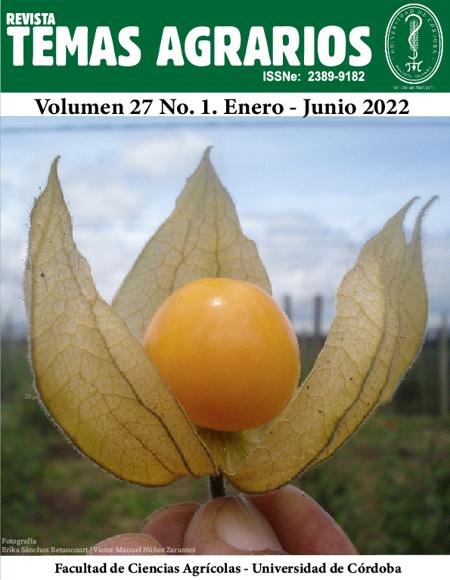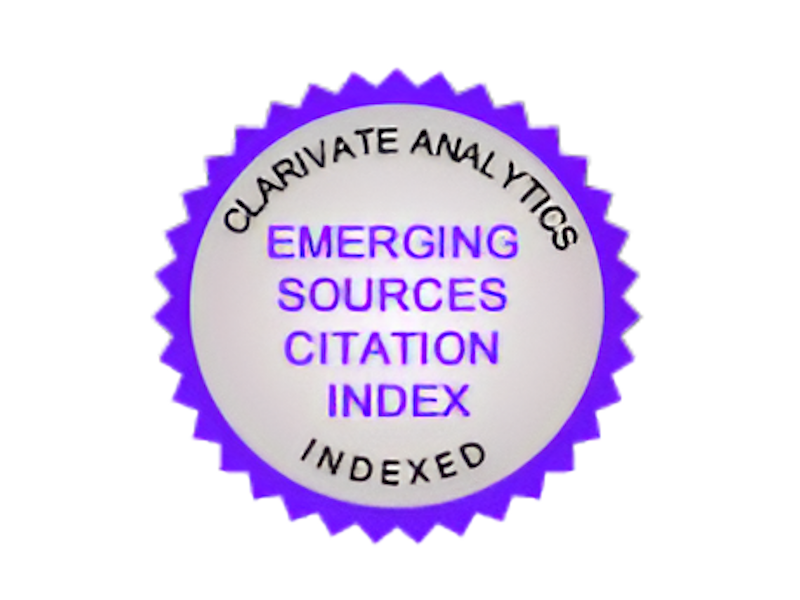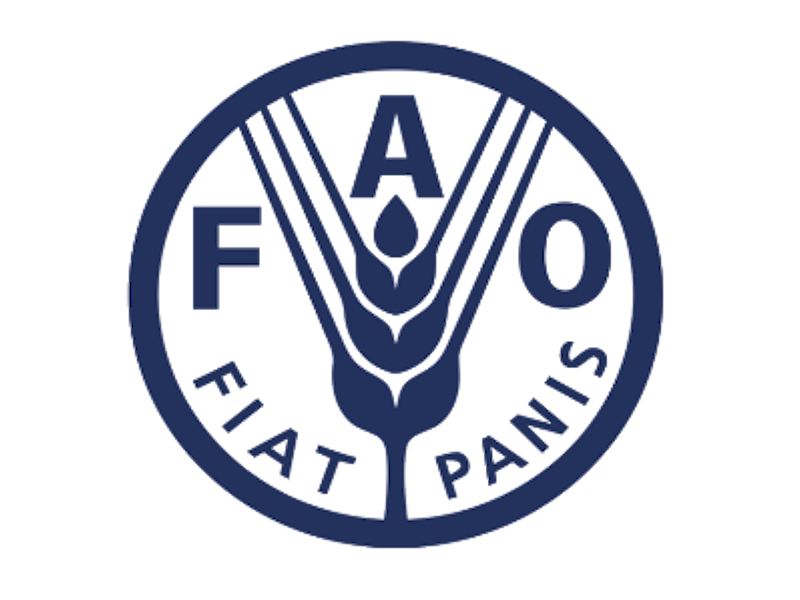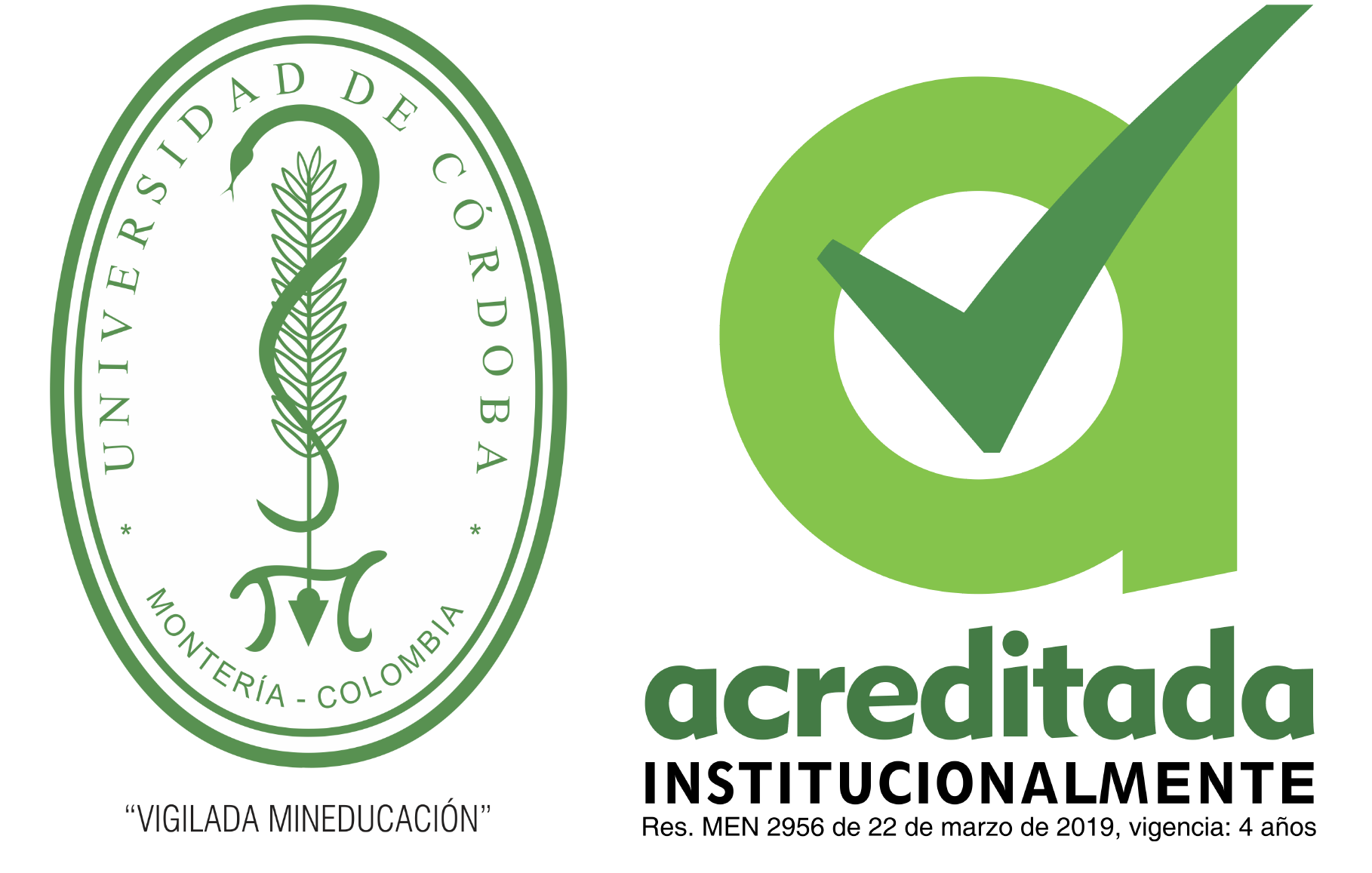Endófitos fúngicos relacionados con la maduración natural y compuestos aromáticos en frutos de especies de la orquídea del género Vanilla
Fungal endophytes related to natural ripening and aromatic compounds in fruits of Vanilla species

Esta obra está bajo una licencia internacional Creative Commons Atribución-NoComercial 4.0.
Mostrar biografía de los autores
La interacción biótica entre plantas y hongos endófitos fortalece la capacidad adaptativa de los hospederos frente a perturbaciones del ambiente, y confiere a los microorganismos asociados beneficios de nutrición y protección. Estudios asociados a hongos endófitos reportan su presencia en la mayor diversidad de plantas existentes. En diferentes plantas hospederas, la interacción con hongos endófitos favorece la producción de metabolitos secundarios y fitohormonas que participan en la obtención de propiedades organolépticas como los sabores y los aromas. Sin embargo, las investigaciones desarrolladas en el género Vanilla son escasas, dificultando el entendimiento de las funciones que pueden desempeñar estos microorganismos en beneficio del hospedero. Con relación a Vanilla, los frutos de especies dentro del clado aromático se distinguen por la presencia de compuestos aromáticos, que aumentan su contenido durante la maduración. Algunos estudios, han demostrado que en los frutos de esta orquídea existen hongos endófitos posiblemente asociados al proceso de maduración que se acelera mediante el curado, pero pocos de estos estudios, han evaluado la actividad de dichos hongos relacionados con la maduración del fruto de forma natural. En esta revisión se recopila literatura científica relacionada con el conocimiento de las comunidades de endófitos fúngicos y su posible aporte en la maduración y producción de compuestos aromáticos en los frutos de vainilla. Se identifican oportunidades de investigación para desarrollar futuros estudios sobre el papel de los microorganismos fungosos para la obtención de metabolitos y precursores aromáticos de los frutos en especies de Vanilla, tanto en condiciones silvestres como en cultivos comerciales.
Visitas del artículo 433 | Visitas PDF
Descargas
- Ahmad, H., Ahmad, R., Asif, M., Adnan, M. and Idrees, M. 2020. Vanilla. In: Asif, M., Nawaz, H., Mumtaz, M., Byrne, M., (Eds.) Medicinal Plants of South Asia. Elsevier. 657-669. ISBN 9780081026595. https://doi.org/10.1016/B978-0-08-102659-5.00048-3.
- Ahimsa-Mueller, M., Market, A., Hellwig, S., Knoop, V., Steiner, U., Drewke, C. and Leistner, E. 2007. Clavicipitaceous fungi associated with ergoline alkaloid containing convolvulaceae. J Nat Prod 70:1955–1960.https://pubs.acs.org/doi/10.1021/np070315t
- Álvarez, C., Santa. C., Ordoñez, N.F., Posada, LP., Diez, M.C., Osorio, N.W., Marín, M.A. and Otero J.T. 2011. Sanidad del cultivo de vainilla (59-61). En. Moreno, F. y Diez, M.C. (eds.). Cultivo de Vainilla, contribuciones para el desarrollo de su cadena productiva en Colombia. Universidad Nacional de Colombia - Medellín.108 pp.
- Andre, C., Hausman, J. and Guerriero, G. 2016. Cannabis sativa: the plant of the thousand and one molecules. Front Plant Sci 7:1-17. https://doi.org/10.3389/fpls.2016.00019
- Backman, P. and Sikora, R. 2008. Endophytes: An emerging tool for biological control. Biol. Control. 46, 1-3. https://doi.org/10.1016/j.biocontrol.2008.03.009.
- Bálint, M., Tiffin, P., Hallström, B., O’Hara, R., Olson, M., Fankhauser, J., Piepenbring, M. and Schmitt, I. 2013. Host genotype shapes the foliar fungal microbiome of balsam poplar (Populus balsamifera). Plos One 8:1-9. https://doi.org/10.1371/journal.pone.0053987
- Banerjee, D. 2011. Endophytic fungal diversity in tropical and subtropical plants. Res J Microbiol 6:54-62. https://scialert.net/abstract/?doi=jm.2011.54.62
- Bayman, P. 2007. Fungal Endophytes. In: Kubicek, C. y Druzhinina, I. (Eds.), Environmental and Microbial Relationships, The Mycota IV. 2nd Edition. Springer, Berlin, Heidelberg, pp. 213- 227.
- Bayman, P., Lebrón, L., Tremblay, R. and Lodge, D. 1997. Endophytic fungi in roots and leaves of Lepanthes (Orchidaceae). New Phytol 135:143–149.
- Besse, P., Silva, D., Bory, S., Grisoni, M., Le Bellec, F. and Duval, M. 2004. RAPD genetic diversity in cultivated vanilla: Vanilla planifolia, and relationships with V. tahitensis and V. pompona. Plant Science, 167(2), 379–385. https://doi.org/10.1016/j.plantsci.2004.04.007
- Bolívar-Anillo, H., Orozco-Sánchez, C., Da Silva, G. and Franco, G. 2016. Endophytic microorganisms isolated of plants grown in Colombia: a short review. J Microb Biochem Technol 8:509-513.
- Cameron, K. and Soto Arenas, M. 2003. Vanilloideae. In: Pridgeon, A., Cribb, P., Chase, M. and Rasmussen, F. (Eds). Genera Orchidacearum, volume 3: Orchidoideae (part 2), Vanilloideae. Oxford University Press, Oxford, pp. 281–334.
- Camu, N., De Winter, T., Addo, S., Takrama, J., Bernaert, H. and De Vuyst, L. 2008. Fermentation of cocoa beans: influence of microbial activities and polyphenol concentrations on the flavour of chocolate. J Sci Food Agric 88:2288–2297. https://doi.org/10.1002/jsfa.3349
- Castro-Alayo, E., Idrogo-Vásquez, G., Siche, R. and Cardenas-Toro, F. 2019. Formation of aromatic compounds precursors during fermentation of Criollo and Forastero cocoa. Heliyon 5(1): 1-29.
- Chen, J., Hu, K., Hou, X. and Guo, S. 2011. Endophytic fungi assemblages from 10 Dendrobium medicinal plants (Orchidaceae). World J Microbiol Biotechnol 27:1009–1016. https://link.springer.com/article/10.1007/s11274-010-0544-y
- Correll, D. 1953. Vanilla – Its botany, history, cultivation and economic import. Econ Bot 7:291–358. https://link.springer.com/article/10.1007/BF02930810
- Cruz-O’Byrne, R., Piraneque-Gambasica, N. and Aguirre-Forero, S. 2020. Physicochemical, microbiological, and sensory analysis of fermented coffee from Sierra Nevada of Santa Marta, Colombia. Coffee Sci 15: 1-6.
- Dignum, M., Kerler, J. and Verpoorte, R. 2001. β‐Glucosidase and peroxidase stability in crude enzyme extracts from green beans of Vanilla planifolia Andrews. Phytochem Anal 12:174–179. https://doi.org/10.1002/pca.578
- Ferreira, C., Batista, L., Magalhaes, L., Souza, E. and Freitas, R. 2008. Succession of bacterial and fungal communities during natural coffee (Coffea arabica) fermentation. Food Microbiol 25:951–957.
- Flanagan, N.S., Chavarriaga, P. and Mosquera-Espinosa, A.T. 2019. Conservation and Sustainable Use of Vanilla Crop Wild Relatives in Colombia. In: Havkin-Frenkel, D., Belanger, F. (Eds). Handbook of Vanilla Science and Technology, 2nd edn. Wiley Blackwell, New Jersey, pp. 85-109.
- Flanagan, N.S. and Mosquera‐Espinosa, A.T. 2016. An integrated strategy for the conservation and sustainable use of native Vanilla species in Colombia. Lankesteriana 16: 201–218.
- Food and Agriculture Organization Data (FAOSTAT). 2019. Vanilla Production.
- Frenkel, C., Ranadive, A., Tochihuitl, J. and Havkin‐Frenkel, D. 2019. Curing of Vanilla. In: Havkin-Frenkel, D. and Belanger, F. (Eds). Handbook of Vanilla Science and Technology, 2nd edn. Wiley Blackwell, New Jersey, pp. 191-216.
- Gamboa, M. and Bayman, P. 2001. Communities of endophytic fungi in leaves of a tropical timber tree (Guarea guidonia: Meliaceae). Biotropica 33(2): 352-360.
- Gimenez, C., Cabrera, R., Reina, M. and Gonzalez-Coloma, A. 2007. Fungal endophytes and their role in plant protection. Curr Org Chem 11(8): 707–720. http://www.eurekaselect.com/article/4103
- Havkin‐Frenkel, D., French, J., Graft, N., Pak, F., Frenkel, C. and Joel, D. 2004. Interrelation of curing and botany in vanilla (Vanilla planifolia) bean. Acta Hortic 629:93–102.
- Hernández-Hernández, J. 2011. Mexican Vanilla Production. In: Havkin‐Frenkel, D. and Belanger, F. (Eds). Handbook of Vanilla Science and Technology, 2nd edn. Wiley Blackwell, New Jersey, pp. 3–24.
- Huch, M. and Franz, C. 2015. Coffee: fermentation and microbiota. In: Holzapfel W (ed) Advances in Fermented Foods and Beverages, Woodhead Publishing, German, pp. 501-513.
- Iamanaka, B., Teixeira, A., Teixeira, A., Copetti, M., Bragagnolo, N. and Taniwaki, M. 2014. Reprint of “the mycobiota of coffee beans and its influence on the coffee beverage.” Food Res Int 61:33–38. https://doi.org/10.1016/j.foodres.2014.05.023
- Jones, M. and Vicente, G. 1949. Criteria for testing vanilla in relation to killing and curing methods. J Agric Res 78: 425–434.
- Kaur, B. and Chakraborty, D. 2013. Biotechnological and molecular approaches for vanillin production: a review. Appl Biochem Biotechnol 169:1353–1372.
- Kanisawa, T., Tohoro, K. and Kawakara, S. 1994. Flavour development in the beans of Vanilla planifolia. In: Kurihara, K., Suzuki, N., Ogawa, H. (Eds.), Olfactionand Taste XI. Springer, Tokyo, pp. 268–270.
- Khoyratty, S. 2020. Potential interference of fungal endophytes in Vanilla planifolia on vanilla flavor compounds biosynthesis. Doctoral dissertation. Leiden University.
- Khoyratty, S., Choi, Y., Dupont, J., Verpoorte, R. and Kodja, H. 2017. Host and guest: vanilla inhabited by endophytes. Mérillon, J. and Ramawat, K. (Eds). Fungal Metabolites. Switzerland, pp. 191-217.
- Khoyratty, S., Dupont, J., Lacoste, S., Palama, T., Choi, Y., Kim, H., Payet, B., Grisoni, M., Fouillaud, M., Verpoorte, R. and Kodja, H. 2015. Fungal endophytes of Vanilla planifolia across Réunion Island: isolation, distribution and biotransformation. BMC Plant Biol 15:142. https://bmcplantbiol.biomedcentral.com/articles/10.1186/s12870-015-0522-5
- Khoyratty, S., Kodja, H. and Verpoorte, R. 2018. Vanilla flavor production methods: a review. Ind Crop Prod 125: 433–442. https://link.springer.com/article/10.1007/s00425-004-1261-2
- Khoyratty, S., Verpoorte, R. and Kodja, H. 2022. Vanillin: Biosynthesis, Biotechnology, and Bioproduction. In: Mérillon, J. and Kodja, H. (Eds). Orchids Phytochemistry, Biology and Horticulture. Springer, Cham, pp. 341-358.
- Koehler, A. 1887. La vainilla, la orquídea Vanilla planifolia. In: Pabst G, Koehler A (eds) Chromolithograph tras una ilustración botánica de Hermann Adolph Koehler de Plantas Medicinales. Alemania.
- Kucht, S., Groß, J., Hussein, Y., Grothe, T., Keller, U., Basar, S., König, W., Steiner, U. and Leistner, E. 2004. Elimination of ergoline alkaloids following treatment of Ipomoea asarifolia (convolvulaceae) with fungicides. Planta 219:619–625. https://link.springer.com/article/10.1007/s00425-004-1261-2
- Lizarazo-Medina, P., Mendoza-Salazar, M. y Gutiérrez-Gallo, A. 2015. Diversidad de la micobiota endófita de Cattleya percivaliana y Cattleya trianaei cultivadas en invernadero. Actual Biol 37(102): 307-318.
- Lubinsky, P., Bory, S., Hernández-Hernández, J., Kim, C. and Gómez, A. 2008. Origins and dispersal of cultivated Vanilla (Vanilla planifolia Jacks. [Orchidaceae]). Econ. Bot. 62(2), 127-138.
- Lubinsky, P. 2007. Historical and evolutionary origins of cultivated vanilla. University of California, Riverside. California.
- Marín-Loaiza, J. y Céspedes, C. 2007. Compuestos volátiles de plantas. Origen, emisión, efectos, análisis y aplicaciones al agro. Rev Fitotec Mex 30(4): 327-351. https://www.redalyc.org/articulo.oa?id=61030401
- Miles, L., Lopera, C., González, S., Cepero, M., Franco, A. and Restrepo, S. 2012. Exploring the biocontrol potential of fungal endophytes from an Andean Colombian Paramo ecosystem. BioControl 57(5): 697-710. https://link.springer.com/article/10.1007/s10526-012-9442-6
- Mishra, R., Kushveer, J. and Sarma, V. 2019. A worldwide list of endophytic fungi with notes on ecology and diversity. Mycosphere 10(1): 798–1079.
- Mishra, R. and Sarma, V. 2018. Current perspectives of endophytic fungi in sustainable development. In: Gehlot, P. and Singh, J. (Eds). Fungi and their role in sustainable development: current perspectives. Springer, Singapoure, pp. 553-584.
- Molineros‐Hurtado, F. 2012. Caracterización morfológica y filogenia del género Vanilla en el distrito de Buenaventura–Valle del Cauca (Colombia). Tesis de maestría en Ciencias Biológicas, línea de investigación recursos fitogenéticos neotropicales. Universidad Nacional de Colombia, sede Palmira.
- Panaccione, D. 2005. Origins and significance of ergot alkaloid diversity in fungi. FEMS Microbiology Letters 251: 9–17. https://doi.org/10.1016/j.femsle.2005.07.039
- Porras-Alfaro, A. and Bayman, P. 2011. Hidden fungi, emergent properties: endophytes and microbiomes. Annu Rev Phytopathol 49: 291–315. https://www.annualreviews.org/doi/10.1146/annurev-phyto-080508-081831
- Quirós, E. 2011. Vanilla production in Costa Rica. Havkin‐Frenkel, D. and Belanger, F. (Eds). Handbook of Vanilla Science and Technology, 1st edn. Wiley Blackwell, New Jersey, pp. 41–51
- Ranadive, A. 1994. Vanilla‐cultivation, curing, chemistry, technology and commercial products. In: Charalambous, G. (Ed.). Spices herbs and edible fungi. Developments in food science, Elsevier Science Publishers BV, Amsterdam, the Netherlands, pp. 517–577.
- Reyes-López, D., Flores-Jiménez, A., Huerta-Lara, M., Kelso-Bucio, C., Avedaño-Arrazate, H., Lobato-Ortíz, R., Aragón-García, A. and López-Olguín, J. 2014. Morfometric variation of fruis and seed in four species of the genus Vanilla. Agric Ecosyst Environ 1(3): 205-218.
- Rodriguez, R. and Redman, R. 2008. More than 400 million years of evolution and some plants still can’t make it on their own: plant stress tolerance via fungal symbiosis. J Exp Bot 59(5): 1109–1114. https://doi.org/10.1093/jxb/erm342
- Roling, W., Kerler, J., Braster, M., Apriyantono, A., Stam, H. and Van Verseveld, H. 2001. Microorganisms with a taste for vanilla: microbial ecology of traditional Indonesian vanilla curing. Appl Environ Microbiol 67(5): 1005-2003. https://doi.org/10.1128/AEM.67.5.1995-2003.2001
- Sabik, H., Pérez-Silva, A., Bélanger, D., Vivar-Vera, M., García, N. and Reyes-López, D. 2016. Identification of volatile compounds in cured mexican vanilla (Vanilla planifolia G. Jackson) beans using headspace solid-phase microextraction with gas chromatography-mass spectrometry. Fruits 71(6): 407-418. https://www.pubhort.org/fruits/2016/6/fruits150162.htm
- Saikkonen, K., Faeth, S., Helander, M. and Sullivan, T. 1998. Fungal endophytes: a continuum of interactions with host plants. Annu Rev Ecol Evol Syst 29: 319–343.
- Salgado, C. and Cepero, M. 2005. Aislamiento de hongos endófitos en rosa (Rosa hybrida) en Bogotá, Colombia. Rev Iberoam Micol 22: 99-101. https://doi.org/10.1016/S1130-1406(05)70016-4
- Sánchez-Fernández, R., Sánchez, B., Sandoval-Espinosa, Y., Ulloa-Benítez, A., Armendáriz-Guillén, B., García, M. y Macías-Rubalcava, M. 2013. Hongos endófitos: fuente potencial de metabolitos secundarios bioactivos con utilidad en agricultura y medicina. TIP Revista Especializada en Ciencias Químico-Biológicas 16(2): 132-146.
- Santamaría, J. and Bayman, P. 2005. Fungal epiphytes and endophytes of coffee leaves (Coffea arabica). Microb Ecol. 50 (1), 1–8. https://link.springer.com/article/10.1007/s00248-004-0002-1
- Santillán, A., Salas, A. and Vásquez, N. 2018. La productividad de la vainilla (Vanilla planifolia Jacks. Ex Andrews) en México de 2003 a 2014. Rev. Mex. Cien. Fores. 9(47), 50-69. https://doi.org/10.29298/rmcf.v9i47.165
- Schwan, R. and Wheals, A. 2004. The microbiology of cocoa fermentation and its role in chocolate quality. Crit Rev Food Sci Nutr 44(4): 205-221.
- Sharma, H., Rai, A., Dahiya, D., Chettri, R. and Nigam, P. 2021. Exploring endophytes for in vitro synthesis of bioactive compounds similar to metabolites produced in vivo by host plants. AIMS microbiology 7(2): 175. http://www.aimspress.com/article/doi/10.3934/microbiol.2021012
- Soto‐Arenas, M. and Cribb, P. 2010. A new infrageneric classification and synopsis of the genus Vanilla Plum. Ex-Mill (Orchidaceae: Vanillinae). Lankesteriana 9:355–398. https://doi.org/10.15517/lank.v0i0.12071
- Sridhar, K. 2019. Diversity, Ecology, and Significance of Fungal Endophytes. Endophytes and Secondary Metabolites 61–100. https://link.springer.com/referenceworkentry/10.1007/978-3-319-76900-4_5-1
- Strobel, G. 2018. The emergence of endophytic microbes and their biological promise. J Fungi 4(57): 1-19.
- Taghinasab, M. and Jabaji, S. 2020. Cannabis microbiome and the role of endophytes in modulating the production of secondary metabolites: an overview. Microorganisms 8(355) 1-15. https://doi.org/10.3390/microorganisms8030355
- Toledo, P., Pezza, L., Pezza, H. and Toci, A. 2016. Relationship between the different aspects related to coffee quality and their volatile compounds. Compr Rev Food Sci Food Saf 15(4): 705–719. https://doi.org/10.1111/1541-4337.12205
- Torres, M., Singh, A., Vorsa, N. and White, J. 2008. An analysis of ergot alkaloids in the Clavicipitaceae (Hypocreales, Ascomycota) and ecological implications. Symbiosis 46(1): 11-19.
- Toth, S., Joong, K., Havkin‐Frenkel, D., Belanger, F. and Hartman, T. 2018. Volatile compounds in Vanilla. In: Havkin-Frenkel, D. and Belanger, F. (Eds). Handbook of Vanilla Science and Technology, 2nd edn. Wiley Blackwell, New Jersey, pp. 285-345.
- Tudzynski, B. 1997. Fungal phytohormones in pathogenic and mutualistic associations. In: Carroll, G. and Tudzynski, P. (Eds). The mycota V. Part A: plant relationships. Springer, Berlin Heidelberg, New York, pp. 167- 184.
- Tudzynski, B. and Sharon, A. 2002. Biosynthesis, biological role and application of fungal phytohormones. The mycota X Industrial applications 183–212. https://link.springer.com/chapter/10.1007/978-3-662-10378-4_9
- Tudzynski, P., Correia, T. and Keller, U. 2001. Biotechnology and genetics of ergot alkaloids. Appl Microbiol Biotechnol 57: 593– 605. https://link.springer.com/article/10.1007/s002530100801
- Vega, F., Simpkins, A., Aime, M., Posada, F., Peterson, S., Rehner, S., Infante, F., Castillo, A. and Arnold, E. 2010. Fungal endophyte diversity in coffee plants from Colombia, Hawai’i, México and Puerto Rico. Fungal Ecol 3: 122-138. https://doi.org/10.1016/j.funeco.2009.07.002
- Xu, F., Chen, Y., Cai, Y., Gu, F. and An, K. 2020. Distinct roles for bacterial and fungal communities during the curing of vanilla. Front Microbiol 11:552388. https://doi.org/10.3389/fmicb.2020.552388




















